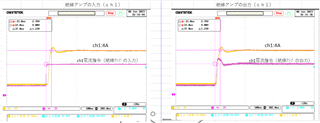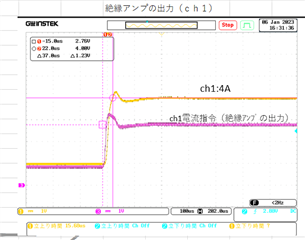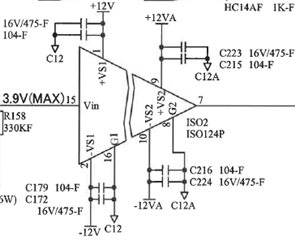Other Parts Discussed in Thread: ISO224
Hi Team,
As shown on datasheet Figure 14 and Figure 15, Output Filter can improve the output ripple but this may also slow down the output so I don't want to use filters.
In my case of Input 4 V, output 4 V, there is usually no ripple on the rise.
But I found a case with ripple in the rising waveform and the ripple disappeared after replacement of parts.
Is it due to the variations of parts? Different by lot?


Best Regards,
Tom






